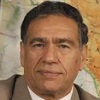The main purpose for covering these definitions in this chapter is to demonstrate that the bases for any of the most commonly used terms, also including “Orient” and simply “the East”, are rooted in European perspectives. These terms center Europe in the geography of the world map. Thus, geographic definitions tended to refer to strategic lands which provided Europeans with access to resources and military advantage, especially India (Center, F.G.E.b).
“During a five day conference in 1922 at Uqair in Eastern Saudi Arabia Sir Percy persuaded Arabia’s future monarch, Ibn Saud, to recognize Iraq. . and determined Iraq’s borders with Kuwait and the Nejd.” Kingmakers, p. 188
“Taking out a map and a pencil, Cox drew the boundary between Iraq and the Nejd. The borders with Syria and the Transjordan were penned similarly. . The International Boundary Commission. . .” p. 189
“Winston Churchill, then British Colonial Secretary, allegedly claimed that he created the borders for the British mandate Transjordan, roughly modern-day Jordan, ‘with the stroke of a pen’ one Sunday afternoon in Cairo.’” (Diener, 2010, p.189)
The term “Middle East” reflects a European worldview, originally imposed on the Middle East through colonization. This is why, if you decide to study the Middle East further or visit there, you may encounter conflicting geographical definitions. Often the term “Middle East” is employed, while at the same time some may choose to speak about their country as part of “West Asia,” “North Africa,” or even “Europe” (in the case of Turkey). It is important to be aware of the political connotations of the various terms.
It is misleading that “The West” came to refer to anything of European cultural origin, in contrast with any other community worldwide (not exclusively “the East”). This binary often, but not accurately, is associated with the axes of “First World” and “Third World,” “Developed” and “Developing,” etc. The line between European/European settler states that were much more modern, or “developed”, and all the other countries of the world, is no longer valid, however. Global health scholar, Hans Rosling, has culled USAID statistic since the 1950s which show that, while there once was a gap, in the past 60 odd years lifestyles have become increasingly similar (2009).


